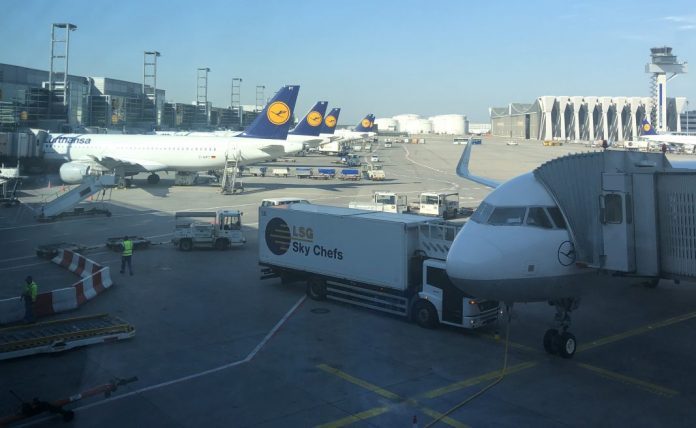Few trades, low supplies and falling spot prices in very challenging markets.
“Customers in the market are not allowed to deliver their orders to their customers. The planes stop. Now we have to make reservations. If things stop we must stop buying. People understand that,” one trader says to SalmonBusiness. “Customers say “we can catch the fish, but if we get the infection inside of the plant we must be able to cancel.”
“It’s impossible to predict anything now. There will be one price on Friday and one on Tuesday.”
Transport
The challenges of logistics are massive following the corona shutdown in several countries. [factbox]
“Do we get transport? Do we get drivers to drive? Here we just have to help each other as best we can and make the best of the situation.”
He bought fish in the mid-60s (NOK) last Friday, but can buy cheaper today, and points to prices between NOK 55 and 60 (€5-5.5).
“It’s been fine this week. The currency helped us a lot. We are also fortunate that this comes at a time when you do not have to harvest a lot of fish. We have reduced our volume by a few hundred tonnes. That applies to everyone. Everyone reduces.”
The United States is gone
He points out that the entry ban on the United States comes into effect tomorrow morning.
“The US market is gone. There is talk of setting up charter and cargo flights, but it is so expensive – double the price. Going through England is cumbersome and risky. England, of course, is in no better situation than others when it comes to infection.”
“That it’s down, of course,” he says of the salmon price. “But it’s very uncertain. I have never been involved in anything more uncertain.”
“Very confusing. We do not get any prices,” says another exporter.
“Customers outside are very uncertain about their order intake. Those who supply to supermarkets and hypermarkets are safer than those who go into traditional fish markets and restaurants. They will place their orders day by day. You can’t buy lots of fish,” he says.
He sits in his home office, as many salmon traders do today.
Currency
“What goes to the supermarkets will go, but restaurants are much more uncertain. It propagates out to the customers. People hoard, it’s empty shelves. People eat less outside and more at home.”
A favorable currency, for the Norwegians, does not help much in price formation, he believes.
“I don’t think price is the main element here. There is more; either you get an order or you don’t get an order. Because here is not so much salmon for slaughter. We are in a period of little salmon for slaughter. It’s a relief.”
A third exporter sees weakening prices, but not much.
“59-65,” he writes in a text message to SalmonBusiness.
That is too high, says a European major importer.
“It’s melt down. No one who dares to buy anything without a sale. Nobody knows what the Poles are doing next week. Everyone knows that the United States is gone. The farmers want NOK 60 (€5.5), the exporters will pay low 50s. They get the help of currency, of course, but it doesn’t help when customers aren’t there,” he notes.
“I bet there are some trades between 55 (€5) and 60 kroner (€5.5), but no volume. Prices will go down.”

